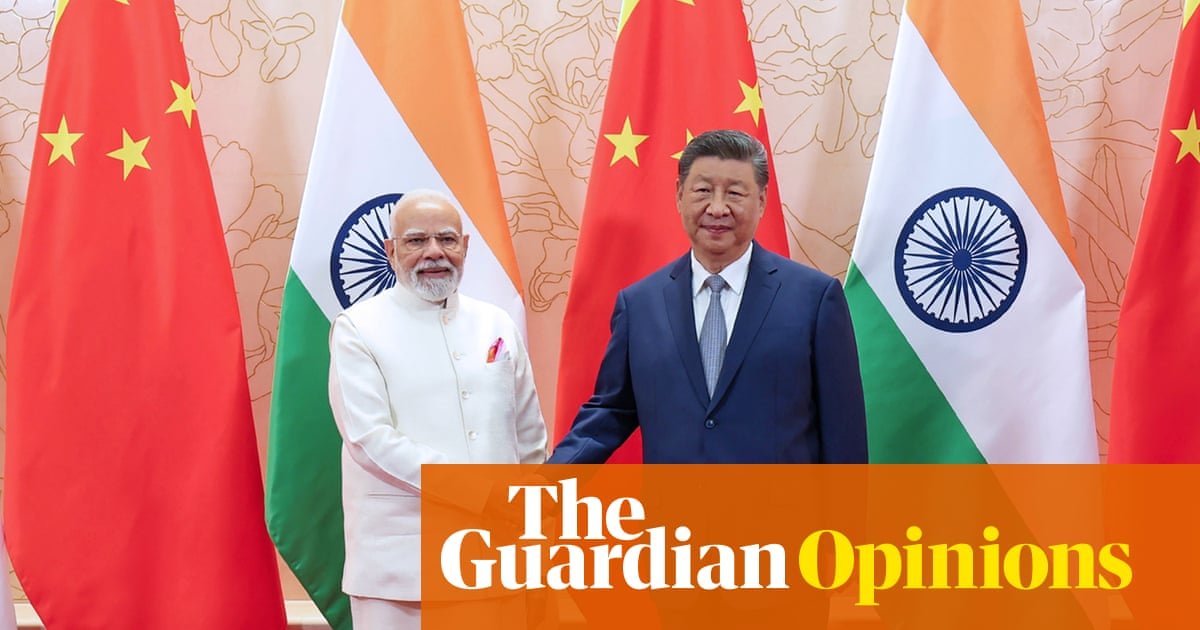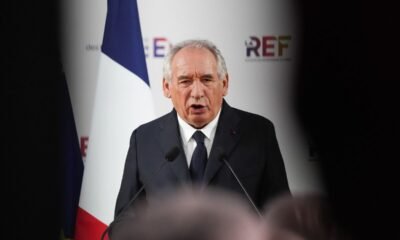Business
Companies focused on AI see surge this earnings season
Businesses focused on artificial intelligence continued to be successful in the most recent quarter.Dado Ruvic/Reuters
Businesses focused on artificial intelligence are raking it in so far this earnings season. Those catering to actual people, less so.
The AI spending surge is providing a big boost for semiconductor and software giants like Google parent Alphabet Inc. GOOGL-Q, while companies from airlines to restaurants and food manufacturers are struggling to navigate an erratic U.S. trade policy which is boosting costs, upending supply chains and hurting consumer confidence.
Along with Alphabet, SK Hynix and India’s Infosys exceeded market forecasts on Thursday and predicted brighter days to come, with Alphabet and SK Hynix both flagging plans to boost spending. SK supplies the world’s most valuable company Nvidia Corp. NVDA-Q, the AI chipmaking giant that recently surpassed US$4-trillion in market value.
By contrast, executives at many consumer names were less enthusiastic, from luxury bellwether LVMH, packaged food giant Nestle, to toymakers Hasbro and Mattel and airlines Southwest and American. They, along with automakers and giants like Coca-Cola, have indicated that some segments of the buying public have pulled in their spending as prices and interest rates remain high. The dichotomy is evident in IBM’s results.
Sales in Big Blue’s “AI book of business” grew 25 per cent in its most recent quarter to US$7.5-billion, while its software segment fell short of expectations and the company sounded cautious about how much its consulting segment might grow this year. The equity market has accentuated the positive. News that the U.S. had struck a trade deal with Japan and was closing in on a deal with the European Union ahead of an Aug 1. deadline boosted markets. The broad S&P 500 notched another record this week and the Eurostoxx was just a few points shy of that mark.
“The market is getting friendly with a view that tariffs ending up higher than they have ever been for 100 years will not have a negative impact on economic growth, because we haven’t seen any negative impact on economic growth so far,” said Van Luu, head of solutions strategy, fixed income and foreign exchange at Russell Investments.
Whether companies continue to absorb that hit remains to be seen. So far, companies have reported over July 16-22 a combined full-year loss of as much as US$7.8-billion, with automotive, aerospace and pharmaceutical sectors hurt the most by tariffs, according to a Reuters tariff tracker.
U.S. averages have been buoyed by the so-called Magnificent Seven, a group of tech giants that has benefited heavily from spending plans on artificial intelligence, and currently accounts for more than 30 per cent of the value of the S&P.
“AI is one of the strongest areas of growth for the economy, and the market mirrors the economy,” said Adam Sarhan, chief executive of 50 Park Investments. To be sure, the market’s reaction may be in part because a larger-than-normal percentage of companies are clearing a lowered bar for estimates.
Walmart unveils AI super agents roll-out to boost e-commerce growth
At the beginning of April, the market expected 10.2 per cent year-over-year S&P earnings growth, but by July, that number had dropped to 5.8 per cent, according to LSEG data. With about 30 per cent of constituents reporting results, the blended earnings growth rate sits at 7.7 per cent.
AI-focused businesses continued to print money in the most recent quarter. Nvidia supplier SK Hynix posted record quarterly profit, boosted by demand for artificial intelligence chips and customers stockpiling ahead of potential U.S. tariffs. Indian IT services provider Infosys raised the floor of its annual revenue forecast range to 1 per cent to 3 per cent, from flat to 3 per cent, matching analyst expectations.
“The tech community is going ahead full speed ahead … and banks are in a very strong position now,” said Bill George, former chairman and CEO of Medtronic and executive education fellow at Harvard Business School. “Other companies will struggle to get growth.”
Consumer companies have been less upbeat. Nestle, the world’s biggest packaged food maker, reported softer demand as it struggled to win thrifty shoppers to its big brands.
U.S. airlines Southwest and American Airlines warned that Americans are travelling less, the latest signal that U.S. consumers are remaining cautious about their spending. Toymakers Mattel and Hasbro both said uncertainties around tariffs are acting as a headwind. Carmakers are among firms dealing with the most difficulty. The auto giants are resisting raising prices, eating the cost of tariffs that may cost them millions or billions of dollars. Levies on metals, copper and auto parts made it harder to navigate changing tariff policies.
South Korea’s Hyundai Motor on Thursday posted a 16-per-cent decline in second-quarter operating profit, saying U.S. tariffs cost it 828-billion won (US$606.5-million) in the second quarter, with a bigger hit expected in the current quarter. General Motors still expects a US$4-billion to US$5-billion hit to its bottom line this year. On Wednesday, Tesla chief executive Elon Musk said U.S. government cuts in support for electric-vehicle makers could lead to a “few rough quarters,” as his firm reported its worst quarterly sales decline in over a decade.
Business
The Guardian view on Donald Trump and India: the tariff war that boosted China | Editorial

Donald Trump’s imperial tendencies see the US president wield tariffs and sanctions in the expectation that America will receive tributes. Yet his latest move – punishing India with 50% tariffs for Russian oil purchases once encouraged by the US – has produced not submission but spectacle. It has sent India’s Narendra Modi to China for the first time in seven years as Xi Jinping hosted more than 20 leaders for the Shanghai Cooperation Organisation (SCO) summit in Tianjin. And it is in Tianjin, not Washington, where it looks as if the hinge of history is moving.
The SCO is easy to dismiss: the bloc is a bundle of contradictions. India and Pakistan remain adversaries. China and India still stare across a garrisoned Himalayan frontier, though relations have thawed since last October’s border breakthrough. Russia and China vie for influence in Central Asia. Unlike Nato, the SCO has no binding defence commitments. For much of its life, it has looked like a paper tiger, sending out communiques that were all roar and no bite.
But in geopolitics, appearances are important. To see Mr Modi, Mr Xi and Vladimir Putin smiling and joking is to watch Washington’s influence fade. Mr Trump’s tariff broadside against India makes Tianjin significant. Here was the prime minister of India – supposedly the US’s Asian counterweight to China – affirming that New Delhi and Beijing are “partners, not rivals”.
India’s calculation is straightforward. It has red lines: agriculture will not be opened up to US demands; oil purchases cannot be determined by Washington; the ceasefire with Pakistan was conceded by Islamabad, not brokered by Mr Trump. Backing down would look like weakness. Far better, from Mr Modi’s perspective, to demonstrate that the US cannot take India’s partnership for granted, and to seek friends elsewhere.
For China, the rewards are immediate. Mr Trump has given Mr Xi a stage on which to pose as the host of an important multipolar gathering. Cai Qi, Mr Xi’s chief of staff and a member of China’s top ruling body – the first to hold both roles since Mao’s era – was dispatched to meet Mr Modi, an unmistakable gesture of intimacy from China’s rulers. Beijing sees the SCO as emphasising the US’s absence and letting others seize the stage.
The implications stretch well beyond South Asia. For Moscow, every handshake in Tianjin underlines that sanctions have not made it a pariah. For Turkey, attendance preserves its ambiguity as a Nato member. For Iran, the SCO condemned the US-Israeli attacks it suffered this summer. The more this theatre normalises China and Russia as leaders of a non-western bloc, the harder it becomes for Washington to muster global consensus – notably over Ukraine – in future crises.
Nor was Tianjin just about Eurasia. A spat with the Philippines over Taiwan on the eve of the summit reminded delegates of China’s reddest lines. The SCO claims it is inclusive. But Beijing runs the show. Mr Trump sought a kowtow from Delhi. Instead, he has handed Beijing the platform for its long game – building a system beyond the reach of the US. Whether that would allow more room for other states to manoeuvre is moot. The SCO may never fight China’s wars, but it ensures Beijing will never stand alone. That is the high price the west may end up paying for Mr Trump’s narcissistic delusions.
Business
Cost of living giveaway event at Withernsea Leisure Centre

Residents struggling with the cost of living will be able to access free gifts and affordable produce at a community event in Withernsea.
East Riding of Yorkshire Council said its Help for Households drop-in event would also offer advice on saving money and staying warm.
The event is being held at the town’s leisure centre on Wednesday 25 September, from 10:00 BST to 15:00.
Councillor Nigel Wilkinson, the authority’s cabinet member for finance and governance, said: “We’re aware that many people across the East Riding are struggling with the ongoing cost of living crisis and are making active efforts to support those in need.”
The council said people could get advice on schemes available to help with heating costs ahead of autumn and winter, while eligible households can also get help with loft and cavity wall insulation.
The authority also said there would be affordable produce available to buy, a heated gilet giveaway and free SIM cards and mobile data.
There will also be advice on benefits available to residents on how to reduce bills.
Wilkinson added: “The council has already helped local residents to claim more than £3.8m in benefits in the past year.
”We highly encourage interested residents in Withernsea to attend the drop-in event and find out more about the support for which they may be eligible.”
Residents unable to attend can learn more about the support schemes available by contacting the council.
Business
Scotland scrapped peak rail fares

Mitchell LabiakBusiness reporter, BBC News
 Getty Images
Getty ImagesTrain passengers no longer have to pay higher prices for peak time tickets on ScotRail, raising the question over whether the rest of the UK could follow suit.
While some passengers told the BBC they would welcome the prospect of cheaper tickets, experts are divided over whether it could push prices up overall or result in overcrowded carriages.
Why do we have peak times?
The peak/off-peak system is designed to discourage passengers from getting on busier trains, by making it more expensive to travel during the commuter rush before 9am and between 5pm and 7pm.
However, the pandemic working from home and rail usage has not yet returned to pre-Covid levels so peak travel times are less busy than they used to be.
David Ross, chief operating officer at ScotRail, told Radio 4’s Today programme that this shift meant it could scrap peak charges as “there’s plenty of capacity for people to travel with us”.
Could peak charges be scrapped in the rest of the UK?
Unlike the Scottish system, English railways are run by a mix of publicly-owned firms and private contractors which the government has pledged to nationalise as their contracts end.
Ticket prices are set by the Department for Transport (DfT) so if the government wanted to scrap peak fares across England it could.
London North Eastern Railway (LNER), which is run by the government, is experimenting with the removal of off-peak charges across parts of its network – with the pilot due to end on 7 September.
The DfT has not said whether or not it would try removing off-peak charges across the whole English network, but it has said it wants to reform the way tickets are priced as it nationalises the system.
“We know the current labyrinth of fares and prices can be confusing, which is why we want to make it easier for passengers to find the right ticket for their journey,” a transport spokesperson said.
Meanwhile, Transport for Wales (TfW) and Translink operate the Welsh and Northern Irish railways and are run by their devolved governments.
The BBC has approached both TfW and Translink for comment.
Would it make ticket prices cheaper?
ScotRail’s move has reduced prices – an anytime day return ticket from Glasgow to Edinburgh has gone from £32.60 to £16.80.
ScotRail’s Ross said this means “passenger journeys will increase and over time it will pay for itself”, but rail experts are divided.
If passenger numbers remain the same ticket prices may need to go up overall to make up for the lost revenue, some have warned.
The other issue is what scrapping off-peak would mean for some already overcrowded routes.
“Clearly, the rush hour trains are already packed. And if you remove the disincentive to travel, it would mean more would want to travel on those trains,” said Bruce Williamson from campaign group Railfuture.
As such, he said any removal of peak charges would need to come alongside investment in increasing capacity of the rail network – something which would cost the government money.
‘I can’t afford to travel during peak times’

Elizabeth Wilson, 18, from Hull, is due to start a maths degree course at Newcastle University and believes ScotRail’s initiative should be “standard across the whole of the country”.
“There shouldn’t be a difference in price just because of when you travel. At the end of the day you’re doing the same journey, it shouldn’t matter what time you do that journey.”
Elizabeth says even with her 16-25 railcard “train fares are really expensive especially for students who don’t have much money”.
“I’m often having to wait until later so I can travel because I can’t afford to travel during peak times,” she adds.
She says the current cost of rail fares mean “you’re almost forced to buy a car because it’s much easier”.

Kara Smith, 23, from Leeds, works at Selfridges in Manchester and says she mainly drives to work because the peak time commute was “very expensive”.
“I used to see most of my wages going on train fares,” she says.
“I’d use the train more often if the fares were cheaper as it’s more convenient. But because of the prices it just makes more sense to drive.”

Mariama Bundu is from Newport in south Wales says she tends to travel at peak times and found the price “ridiculous”.
She spoke to the BBC at Paddington station in London where she was changing trains, having spent almost £200 on a return journey from Newport to Cambridge.
“Sometimes, I have to travel in first class because it’s difficult to get seats [in standard class during peak times],” she added.
Additional reporting by Pritti Mistry, Simon Browning and Emer Moreau
-

 Business3 days ago
Business3 days agoThe Guardian view on Trump and the Fed: independence is no substitute for accountability | Editorial
-
Tools & Platforms3 weeks ago
Building Trust in Military AI Starts with Opening the Black Box – War on the Rocks
-

 Ethics & Policy1 month ago
Ethics & Policy1 month agoSDAIA Supports Saudi Arabia’s Leadership in Shaping Global AI Ethics, Policy, and Research – وكالة الأنباء السعودية
-

 Events & Conferences3 months ago
Events & Conferences3 months agoJourney to 1000 models: Scaling Instagram’s recommendation system
-

 Jobs & Careers2 months ago
Jobs & Careers2 months agoMumbai-based Perplexity Alternative Has 60k+ Users Without Funding
-

 Funding & Business2 months ago
Funding & Business2 months agoKayak and Expedia race to build AI travel agents that turn social posts into itineraries
-

 Education2 months ago
Education2 months agoVEX Robotics launches AI-powered classroom robotics system
-

 Podcasts & Talks2 months ago
Podcasts & Talks2 months agoHappy 4th of July! 🎆 Made with Veo 3 in Gemini
-

 Mergers & Acquisitions2 months ago
Mergers & Acquisitions2 months agoDonald Trump suggests US government review subsidies to Elon Musk’s companies
-

 Podcasts & Talks2 months ago
Podcasts & Talks2 months agoOpenAI 🤝 @teamganassi






















